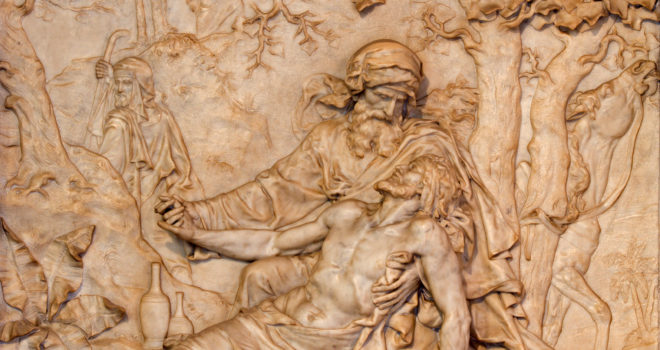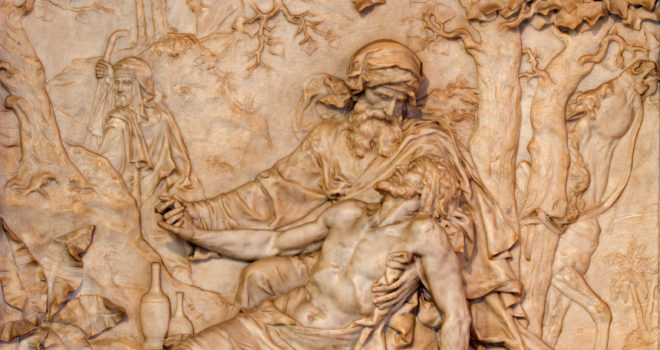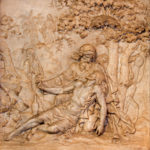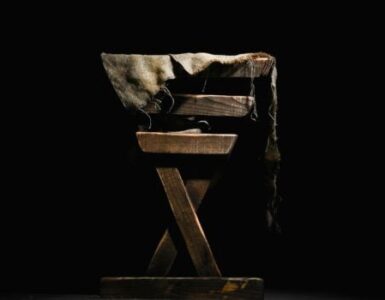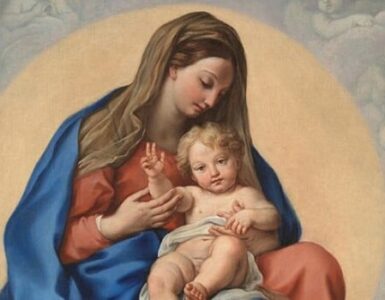“Go and do likewise” (Luke 10:37). So concludes the pericope with the Parable of the Good Samaritan. At the heart of the message of the Parable is the story of Redemption. At the heart of the story of redemption is a conversion, a metanoia, literally a “going beyond (meta) one’s mentality, one’s nous.” At the heart of this conversion is prayer. Mother Teresa of Calcutta reminds us of the four “steps” of prayer: 1) silence, 2) good thoughts, full of love 3) good actions, 4) interior peace. Let us not forget to seclude ourselves in silence, to stay in our rooms, as Pascal would remind us. However, let it not be only exterior silence but silence in the interiority of ourselves. After all, if we cannot relate to ourselves, we cannot relate to others. If we want to do good works that relate to others, we must first be filled with divine inspirations for God is Goodness, and this goodness is diffused by His will, the so-called Bonum diffusivum sui, witnessed in His Creation and Redemption. However, God wills to work with the creatures who are capable of understanding and loving Him to bring about this Redemption. As St. Augustine reminds us, God who created us without our consent does not save us without our consent. So, our consent, our participation in the will of God, is crucial for our Redemption. We “go and do likewise,” imitating God in the inspirations which He has given us in prayer.
The Parable of the Good Samaritan is fundamentally a reminder of what this Redemption means. After Our Lord reminds His disciples in private the following, “Blessed are the eyes that see what you see.For I tell you that many prophets and kings wanted to see what you see but did not see it, and to hear what you hear but did not hear it.” (Luke 10:23-24), an expert in the Law asks Him what he needs to do to inherit Eternal Life. It sounds like the Rich Young Man in Matthew 19. It is about the foundations of the moral life, i.e., the foundations of one’s moral actions. When the lawyer finds himself surprised by Our Lord’s clear teaching on loving God with one’s whole self and being and one’s neighbor as oneself, the lawyer wants to justify himself further by asking who his neighbor is. It is here that Our Lord begins with the Parable of the Good Samaritan.
The parable begins with a man who goes from Jerusalem to Jericho and gets attacked by robbers. “They stripped him of his clothes, beat him and went away, leaving him half dead” (Luke 10:30). Metaphorically, this is mankind stripped of its glory due to original sin. The man in the parable, like Adam, has willingly sinned because he has turned away from God, represented by Jerusalem, the City of David, the City of God and of His Temple, as he travels to Jericho, the City of Sin. Left on the side of the road, unable to move, but not entirely dead, man nonetheless has hope. Whereas Martin Luther would say that man’s nature is entirely dead and destroyed, Scripture here teaches that he is not entirely dead but half alive, semivivo. His nature is good and can be redeemed, even if it is severely handicapped on the side of the road. The three characters that emerge are also important. They are also all going to Jericho. The priest represents spirituality in general. Since it is merely human, it cannot help the man on the side of the road. The Levite represents philosophy. Again, since it is merely an explanation of reality from the perspective of nature itself, it cannot help the man on the side of the road. Here we think of sciences like the social sciences of psychology and sociology. They may be positively on the mark about certain phenomena, but they often do not have profound solutions the way that a good confession with the grace of the sacrament can have. Certainly, they may have their place, but let us beware of not making them substitute God. In the Parable, only he who comes from outside can truly help. In this sense, he is represented by the Samaritan, an Outsider to the Jewish world. Clearly, this Samaritan is Jesus Himself. It is God who assumes our nature, all the while maintaining His divine nature. He can save the man because He is both Man and God. It is the mystery of the Incarnation, the mystery of Mediation, i.e., the mystery of the Bridge between God and Man in Jesus Christ. God has lowered Himself in what is known as Kenosis, assuming our nature to redeem us, to “buy us back” from the Devil’s clutches. “You have been bought at a great price,” (1 Cor 6:20) St. Paul reminds the Corinthians, and St. Peter reminds us at the beginning of his First Epistle: “…with the precious Blood of Christ’s death” (1 Peter 1:19).
Redemption is very profound. It is not superficial. The effects of a religious response to the saving act of the Cross are therefore very profound. The historian Christopher Dawson and the poet T.S. Eliot remind us that there are four phenomena to see in historical considerations of a given culture: 1) religion, 2) culture, 3) art, and 4) philosophy. Let us remember that religion at its etymological core is about rereading (Seneca) and rebinding (St. Augustine) what one has read (Cf. Summa Theologiae II-II q. 81). If this is about rereading what has been given to us from God by Divine Revelation, then it is not merely a projection of ourselves, as we find in natural religion and of which we are accused by Feuerbach. The Supernatural encounters the Natural, and this happens “in the fullness of time” (cf. Galatians 4:4) when God assumes our human nature, the Incarnation that enters a divided world to bring true healing, unity, and peace. According to Dawson, culture is the context in which religion finds itself, and it is a fragile reality that can change from one generation to the next unless of course it is nourished by the higher principles of religion, especially manifest in divine worship, the cultus. In turn, this harmony between religion (what one can relate to the higher faculties of the intellect and will because it really demands our whole being, much like what Our Lord tells the lawyer in the Parable) and culture (what one can relate to the passions, like the irascible and the concupiscible passions) is then manifest in the arts. Man is an artisan who combines what the Creator has left for him. Man does not create from nothing, ex nihilo. Rather, he works with what he has and brings order to creation. Finally, man explains all of this with philosophy. We see this process in the History of Christianity because we find that the apex of Christian Civilization is what Etienne Gilson would say is the Christian Philosophy of the late Middle Ages. Philosophy, like culture and the arts, is inspired by Religion, by Divine Revelation. In this way, we see that Religion, the One True Religion, is not at all a superficial feeling. It includes feelings, but it is more profound than feelings alone.
Overall, what we see in the Parable of the Good Samaritan is the Love of God for our fallen nature. God can surprise the course of history, as we see with the Incarnation itself, coming into a context of great complexity: Hellenistic, Jewish, and Roman. People ask themselves today where are the miraculous interventions of God that save the man on the road. It is here that we see that the history of the Church is replete with such saintly interventions. No one can deny that the recent conversion of Shia LaBeouf, explained very articulately to Bishop Robert Barron, is not just such a miracle, this time by the great miracle-worker, St. Pio of Pietrelcina, a priestly saint who really lived the Mass, the highest religious act of justice. In fact, like all conversion, Shia’s conversion took time. As he found himself in a devastated state with suicidal thoughts, he was asked to star in a new film on the life of Padre Pio. He took this task on. He went to live with the Capuchin Franciscans, the Order in which Padre Pio was a part. There, he learned a lot simply immersing himself in a life of penance and prayer. Finally, when he went to Oakland, California to practice the Traditional Latin Mass which Padre Pio celebrated to his dying day in 1968, Shia had an added, very powerful grace. Exposed to the Mass by a French Institute, i.e., The Institute of Christ the King, Shia was so keen as to notice even how different an Italian priest like Padre Pio would celebrate the Mass when compared to the French priests. The very same Mass celebrated by priests from different cultures can have its “tonalities.”
This is the Catholic Faith, one that integrates not only the human and the divine, but one that integrates different cultures in the one Christian civilization of love. This is evident in European History, and Christopher Dawson does an excellent job of bringing this out. The hotelier from the Parable of the Good Samaritan, after all, is a priest, and the hotel is the Church. Until Our Lord comes again to finish paying the bill in what we can see is the Last Judgment, the Church continues to work on His behalf, being conserved through the tempests of the ages. Dom Guéranger reminds us that there are three fundamental miracles in Christian History that only emphasize how the criterion to history is Christian, as the Fathers themselves would say: 1) the Jewish people, 2) the conversion of the Gentiles, and 3) the conservation of the Church. Just as one is about to lose hope in our difficult times, it is good to make an act of Faith in Christ, asking Him with all candidness to intervene. One might just be surprised by the healing process of the Good Samaritan.
✠


